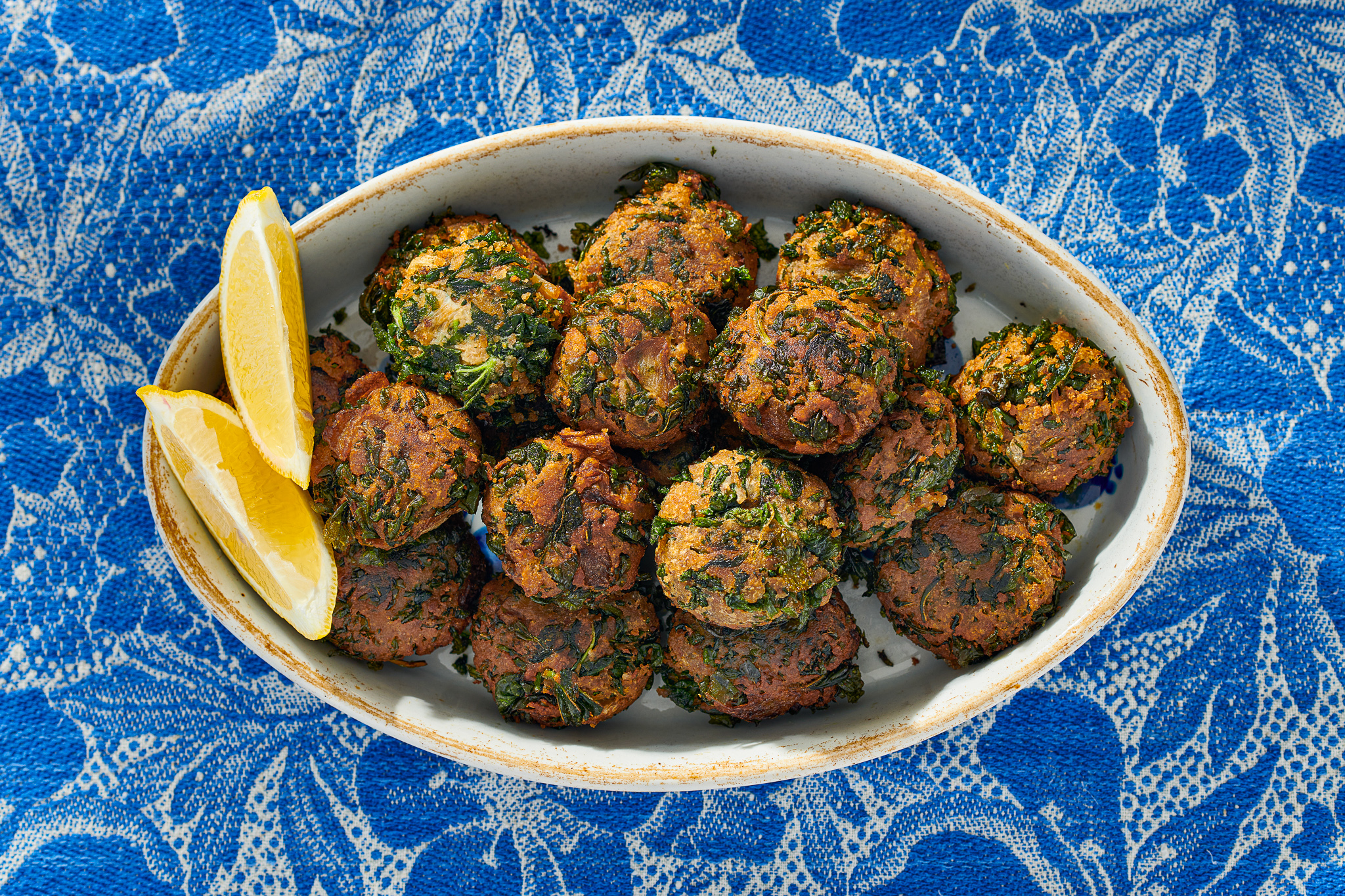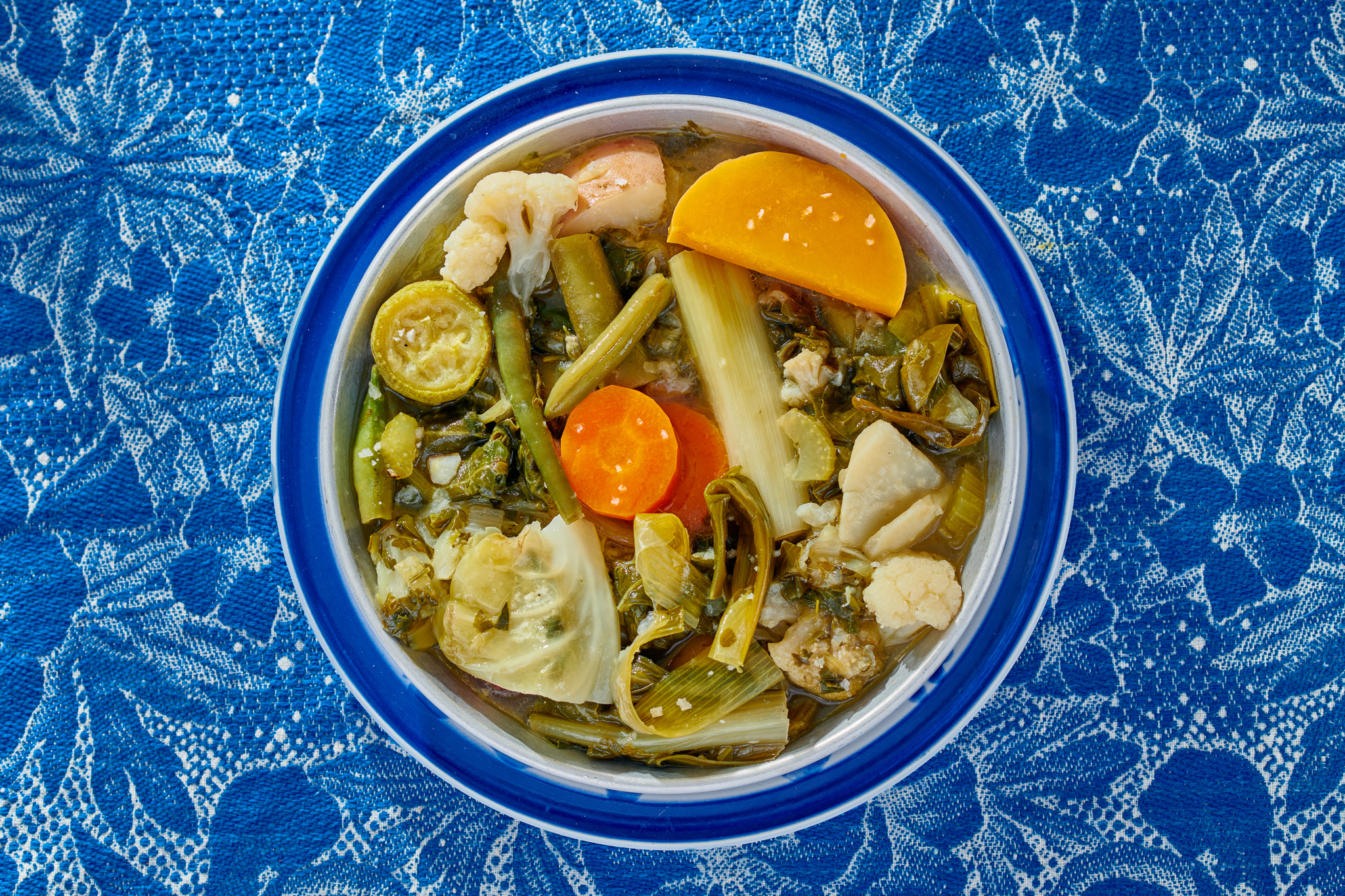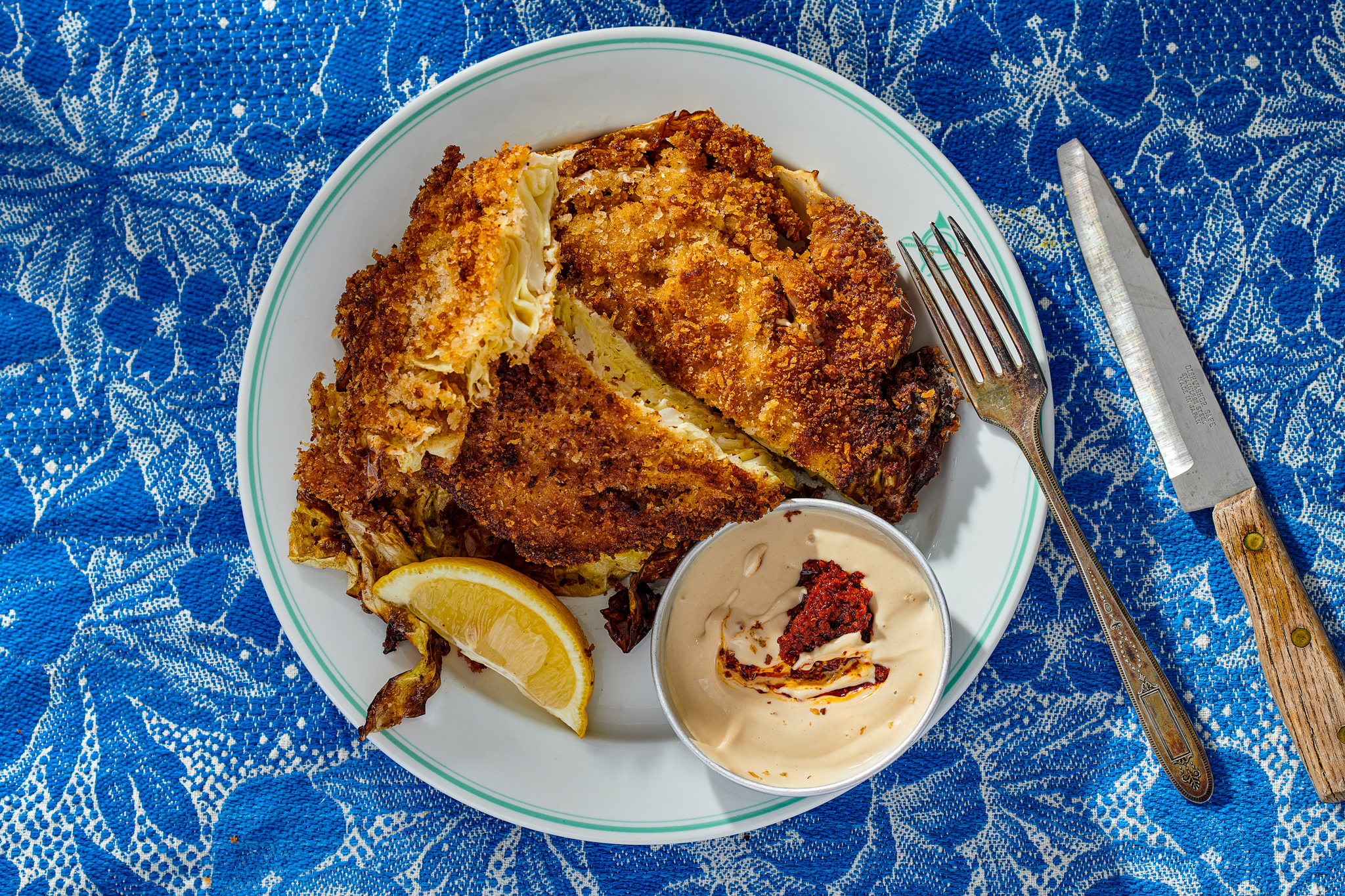What’s Old Is New:
A Vegetarian Passover Menu Inspired by the 1940s
One of the central questions that arises from “Picnic on Mars,” an installation display at Asif, is how the choice of what to eat shapes tomorrow. Today, many of us consider labels like local, seasonal, vegan, and plant-based as we shop, keeping in mind both our health and sustainability. But relying on a largely seasonal and vegetable-based diet isn’t new — it has a long history here.
In the early years of the state, organizations like the Women’s International Zionist Organization (WIZO) encouraged women to grow gardens to make their families self-sufficient and themselves useful. To help these new immigrants use the bounty from their gardens, WIZO and other Zionist authors published cookbooks. During the Tzena era, or age of austerity and rationing, meat was in short supply and vegetables often took their place in the cookbooks with recipes for dishes like cabbage schnitzel and zucchini in the style of calf’s brain.
For Passover, we asked Zion Barnes, chef at Tel Aviv’s celebrated Ha’achim restaurant, to research these books and create a colorful holiday table with recipes inspired by them. As a chef, Barnes explains that he’s committed to focusing on what grows locally, but finding that mirrored in older books resonated on a deeply personal level. “A lot of things have changed over time since the old recipes came out, and yet they have lots of principles that are identical to today’s reality,” he explains. Eating well, both then and now, requires, a “connection to the land, the wisdom of the past, a respect for local Palestinian tradition and seasonality, and using leftovers smartly.” Challenges, like not having access to (or abstaining from eating) meat, become culinary advantages, allowing the books’ authors and him to find ways of letting each vegetable shine.
These recipes are easy to prepare and put vegetables at the center of the table. “If you make them as a whole meal, then the joy they’ll bring you is big,” he adds, a sentiment fitting for a holiday when celebrating is key.





